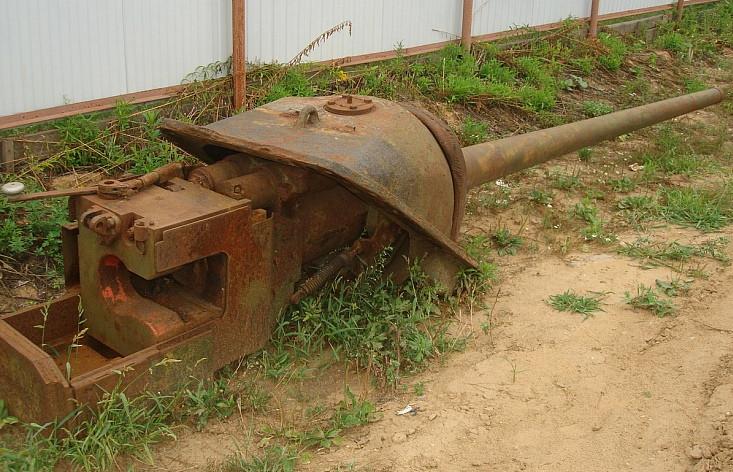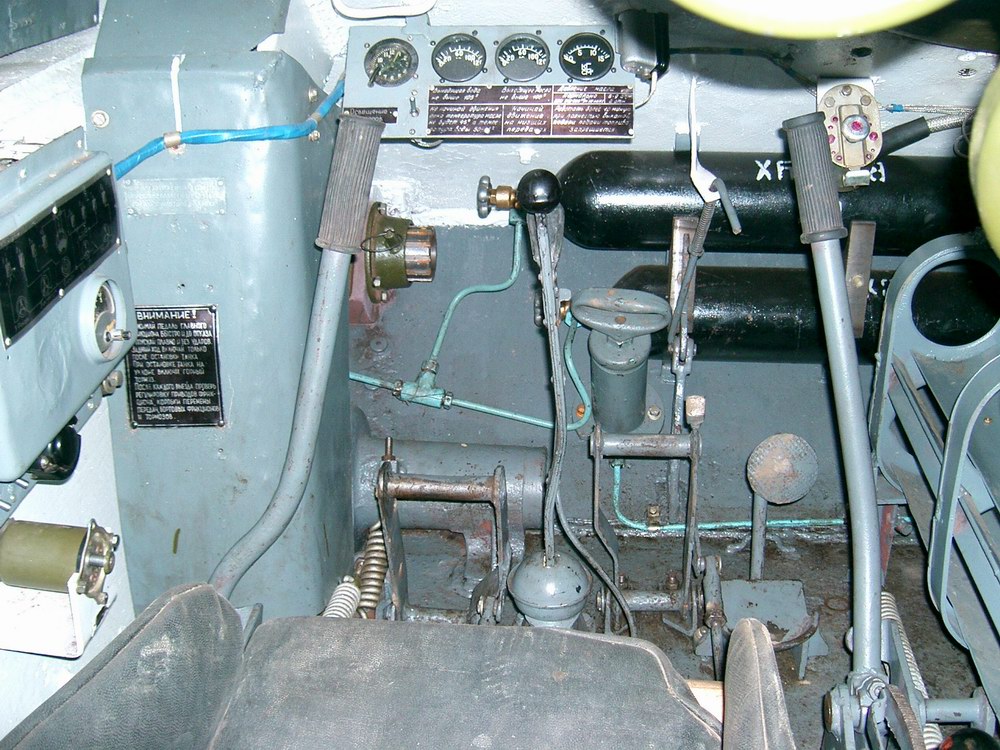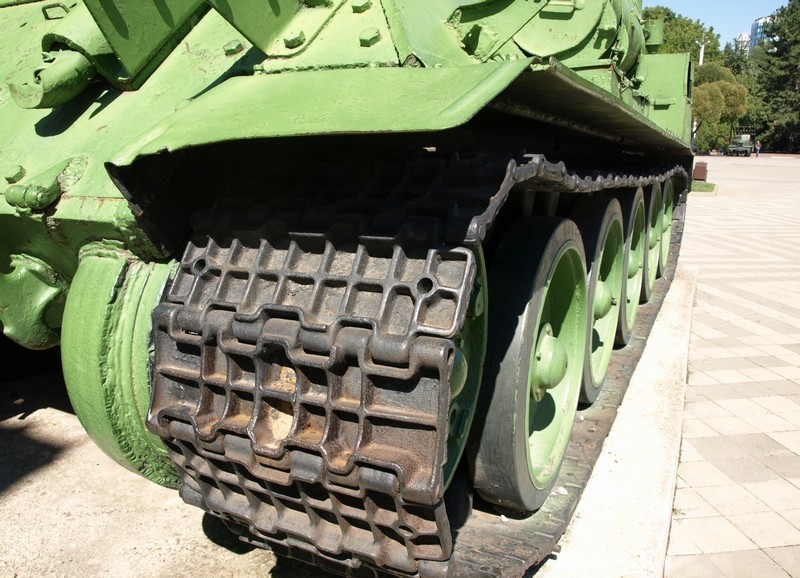By 1944, the command of the Red Army came to the conclusion that the means available to them to confront the fascist tanks were not enough. Urgently needed to qualitatively strengthen the Soviet armored forces. Among the various models that are in service with the Red Army, PT SAU-100 deserves special attention. According to military experts, the Red Army became the owner of a highly effective anti-tank weapon that can successfully withstand all serial models of Wehrmacht armored vehicles. You will learn about the history of creation, design, and the performance characteristics of the SAU-100 from this article.
Acquaintance
SAU-100 (photo of armored vehicles - below) is the average mass of the Soviet anti - tank self - propelled artillery mount. This model belongs to the class of tank destroyers. The basis for its creation was the medium tank T-34-85. According to experts, the Soviet self-propelled guns-100 is the further development of self-propelled guns self-propelled guns SU-85. The performance characteristics of these systems no longer suit the military. Due to the insufficient power of Soviet artillery mounts, such German tanks as the Tiger and Panther could impose battle from long distances. Therefore, it was planned in the future to replace the SAU-85 with the SAU-100. Serial production was carried out at Uralmashzavod. In total, Soviet industry produced 4976 units. In the technical documentation, this installation is listed as PT-SAU SU-100.
History of creation
SU-85 is considered the first artillery system of the class of tank destroyers, which was produced by the Soviet defense industry. Its creation began in the early summer of 1943. The installation was based on the T-34 medium tank and the SU-122 assault gun. With the 85 mm D-5C gun, this installation successfully resisted German medium tanks at a distance of up to a thousand meters. From close range armor of any heavy tank made its way from D-5C. The exceptions were Tiger and Panther. These Wehrmacht tanks were distinguished from the rest by enhanced firepower and armor protection. In addition, they had very effective aiming systems. In this regard, the Main Defense Committee set the task for Soviet designers of Uralmashzavod to create more effective anti-tank weapons.

This should have been done in a very short time: only September and October were at the disposal of the gunsmiths. Initially, it was planned to slightly change the body of the SU-85 and equip it with a 122 mm D-25 cannon. However, this would lead to an increase in installation weight of 2.5 tons. In addition, the ammunition and rate of fire would be reduced. The designers did not like the 152-mm howitzer D-15. The fact is that with this gun the chassis would be overloaded, and the machine would have reduced mobility. At that time, work was underway on long-barrel 85-mm guns. After the tests, it became clear that these guns have unsatisfactory survivability, since several of them burst during the shooting. At the beginning of 1944, a 100-mm gun D-10S was created at the factory number 9.

The Soviet designer F.F. Petrov. The basis for the D-10S was the B-34 marine anti-aircraft gun. The advantage of the D-10C was that it could be mounted on a self-propelled gun without exposing the equipment to any design changes. The mass of the machine itself did not increase. In March, they created an experimental prototype "Object No. 138" with D-10C and sent it to factory tests.
Testing
In factory tests, armored vehicles traveled 150 km and fired 30 shells. After she was taken to undergo state-level tests. At the Gorokhovets artillery research and testing ground, the prototype fired 1,040 rounds and covered 864 km. As a result, the technique was approved by the state commission. Now the Uralmashzavod employees were faced with the task of setting up the serial production of a new self-propelled complex as quickly as possible.
About production
The production of tank destroyers SU-100 began at Uralmashzavod in 1944. In addition, Czechoslovakia acquired a license for the manufacture of self-propelled guns in 1951. According to experts, the total number of tank destroyers SU-100, issued by the Soviet and Czechoslovak industry, varies between 4772-4976 units.
Description
According to experts, the SAU-100 has the same layout as the base tank. The frontal part of the armored vehicles became the seat of the command and control departments, and a place was allocated for the engine-transmission in the stern. In German tank building, the traditional layout was used, when the power unit was installed at the stern, and the drive wheels and transmission were installed on the front. A similar device had self-propelled guns E-100 Jagdpanzer. Design work on this model was carried out in 1943 in the city of Friedberg. The Germans, as we see, also tried to optimize the production of armored vehicles as much as possible. For example, experts from the Wehrmacht felt that manufacturing a super-heavy Maus tank would cost the country too much. Therefore, Jagdpanzer was developed as an alternative to the Mouse. There are four people in the combat crew of the SAU-100 tank, namely: driver, commander, gunner and loader.

The driver was located in the frontal part on the left, and the commander - on the right side of the gun. Behind him was a workstation for the loader. The gunner was sitting at the left side of the mechanic. To enable the crew to land and land, the armored hull was equipped with two folding hatches - in the roof of the commander’s tower and in the stern. The combat crew could land through the hatch, which was located in the bottom of the fighting compartment. The hatch in the wheelhouse was used for a panorama of the guns. If necessary, crew members could shoot with personal weapons. Especially for this purpose, the self-propelled guns were equipped with openings that were closed using armored caps. The cabin roof was equipped with two fans. The cover in the engine-transmission compartment and the hinged upper aft plate contained several hatches through which the mechanic, like in the T-34, could get to the transmission and power unit. A circular view was provided by viewing slots in the tank turret in the amount of five pieces. In addition, the turret was equipped with a periscope viewing device Mk-4.
About weapons
As the main weapon in the SAU-100 used a 100-mm rifled gun D-10S 1944 release. An armor-piercing projectile fired from this gun moved toward the target at a speed of 897 m / s. The maximum muzzle energy was 6.36 MJ. This gun had a semi-automatic horizontal wedge shutter, electromagnetic and mechanical releases. In order to ensure smooth vertical aiming, the D-10S was equipped with a spring compensating mechanism. For recoil devices, the developer has provided a hydraulic brake-recoil and a hydropneumatic recuperator. They were placed on both sides above the trunk. The total weight of the gun, bolt and opening mechanism amounted to 1435 kg. The cannon was mounted on the frontal plate of the cabin on double trunnions, which made it possible to aim in the vertical plane in the range from -3 to +20 degrees and in the horizontal - +/- 8 degrees. Guidance guns performed manual lifting sector and rotary screw mechanisms. During the shot, the D-10S was rolled back by 57 cm. If it was necessary to perform direct fire, the crew used a telescopic articulated sight TSh-19 with a four-fold increase. This system provided visibility in the field of view up to 16 degrees. From a closed position, a panorama of Hertz and a side level were used. Within one minute, up to six shots could be fired from the main gun. In addition, two 7.62 mm PPSh-41 submachine guns, four anti-tank grenades and 24 F-1 anti-personnel anti-personnel fragmentation rounds were attached for the combat crew. Subsequently, the PPSh was replaced by a Kalashnikov assault rifle. According to experts, in rare cases the SAU-100 crew could use additional light machine guns in rare cases.
About ammunition
For the main armament of self-propelled guns, 33 unitary shots were provided. The shells were stacked in the wheelhouse - for this purpose, the manufacturer made special racks. Seventeen of them were on the left side of the side, eight in the back, eight in the right. In the Great Patriotic War, the ammunition consisted of pointed and blunt-headed caliber armor-piercing, fragmentation and high-explosive fragmentation shells.
After the war ended, the ammunition was supplemented first with more effective armor-piercing shells UBR-41D, in which there were protective and ballistic tips, and then subcaliber and non-rotating cumulative. In the standard ammunition of the self-propelled gun there were high-explosive fragmentation (sixteen pieces), armor-piercing (ten) and cumulative (seven shells). Additional weapons, namely PPSh, was equipped with cartridges of 1420 pieces. They put them in disk stores (twenty pieces).
About the running gear
According to experts, in this area, self-propelled gun practically does not differ from the T-34 base tank. Each of the sides in the self-propelled guns had gable track rollers (five each). Their diameter was 83 cm. Rubber bandages were provided for the chassis with the drive wheel, Christie's suspension and sloth. Installation without supporting rollers - in order to hook the upper branch of the belt, the support rollers were used. Driving wheels with crest engagement are located at the rear, and sloths with tensioning mechanisms are located at the front. Unlike the T-34, the chassis of the self-propelled guns, namely its front rollers, were reinforced with three bearings. The diameter of the wire springs was also changed from three to 3.4 cm. The caterpillar track was represented by 72 stamped steel tracks, the width of which was 50 cm.

In an effort to improve the patency of the artillery mount, in some cases, the tracks were equipped with lugs. They were fastened with bolts to every fourth and sixth tracks. In the 1960s Self-propelled guns were produced with stamped track rollers, as in the T-44M.
About the power plant
The self-propelled guns used a four-stroke V-shaped 12-cylinder V-2-34 liquid-cooled diesel engine. This unit is able to develop a maximum power of up to 500 horsepower at 1800 rpm. The rated power indicator was 450 horsepower (1750 revolutions), operational - 400 horsepower (1700 revolutions). Its launch was carried out using a starter ST-700, whose power was 15 horsepower. Also for this purpose, compressed air was used, which was contained in two cylinders. Two Cyclone air purifiers and two tubular radiators were attached to the diesel engine. The total capacity of the internal fuel tanks was 400 liters of fuel. There were also four additional 95 liter external cylindrical fuel tanks. They were not connected to the entire fuel system of artillery self-propelled guns.
About Transmission
This system is represented by the following components:
- multi-disc main clutch of dry friction;
- five-speed manual gearbox;
- two multi-disc side friction clutches of dry friction and belt brakes using cast iron pads;
- two simple single-row final drives.
All management drives are mechanical type. So that the driver could make turns and braking the self-propelled guns, two levers were placed on both sides of its workplace.
About fire fighting equipment
As in other samples of the USSR armored vehicles, this self-propelled artillery installation had a tetrachloric portable fire extinguisher. If a fire would suddenly occur inside the cabin, the crew would have to use gas masks. The fact is that, upon reaching a hot surface, tetrachloride reacts chemically with the oxygen in the atmosphere, resulting in the formation of phosgene. This is a potent toxic substance of a choking nature.
TTX
SAU-100 has the following performance characteristics:
- armored vehicles weigh 31.6 tons;
- there are four people in the carriage;
- the total length of self-propelled guns with a gun is 945 cm, hulls - 610 cm;
- installation width - 300 cm, height - 224.5 cm;
- clearance - 40 cm;
- equipment with homogeneous steel rolled and cast armor;
- thickness of the bottom and roof - 2 cm;
- on the highway, self-propelled guns run up to 50 km per hour;
- armored vehicles overcome rugged terrain at a speed of 20 km / h;
- self-propelled gun with a reserve walks along the highway - 310 km, cross country - 140 km;
- the indicator of specific pressure on the soil is 0.8 kg / sq. cm;
- the artillery mount overcomes 35-degree climbs, 70-centimeter walls and 2.5-meter ditches.
Finally
According to military experts, this self-propelled artillery installation during the years of the Great Patriotic War has established itself as one of the best anti-tank systems. The characteristics of the SAU-100 allowed the troops of the Red Army to successfully confront the fascist Tigers and Panthers. These samples of Wehrmacht armored vehicles were destroyed with the help of Soviet self-propelled guns from a distance of 1,500 m. A direct hit of the self-propelled guns-100 could not withstand the armor protection of Ferdinand. In the post-war period, these artillery self-propelled guns were for a long time in service in many states.
Mostly these are the countries of the former Soviet Union, Slovakia and the Czech Republic. Several dozens of self-propelled guns are used today as memorials in various military museums.